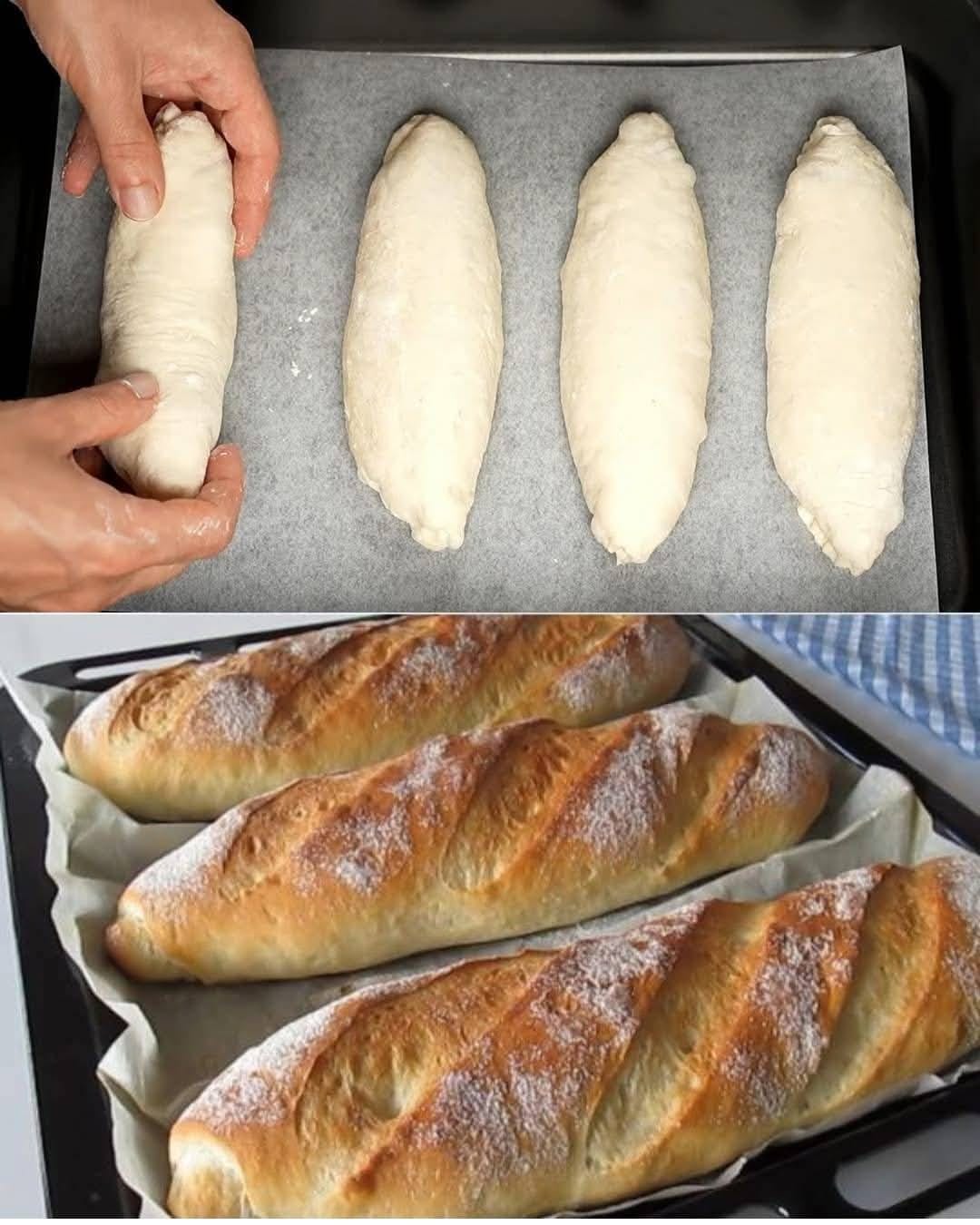ADVERTISEMENT
Instructions:
Step 1: Activate the Yeast
- Prepare the Yeast Mixture: In a small bowl, combine the warm water, sugar, and yeast. Stir to dissolve the sugar, and then let it sit for about 5-10 minutes, or until the mixture becomes frothy. This step ensures that your yeast is active and ready to make the dough rise.
Step 2: Make the Dough
- Combine Dry Ingredients: In a large mixing bowl, combine the flour and salt. If you’re using dried herbs, you can add them to the dry ingredients as well.
- Add Wet Ingredients: Once the yeast mixture is frothy, add it to the flour mixture, followed by the olive oil and honey (if using). Mix everything together until a dough begins to form.
Step 3: Knead the Dough
- Knead the Dough: Turn the dough out onto a floured surface and knead it for about 8-10 minutes, or until it becomes smooth and elastic. If the dough feels sticky, add a little extra flour, one tablespoon at a time, until it reaches the right consistency.
- Let It Rise: Lightly oil a clean bowl with some olive oil, and place the dough in the bowl, turning it once to coat it in oil. Cover the bowl with a clean kitchen towel or plastic wrap and set it in a warm, draft-free area to rise. Let it rise for about 1 to 1.5 hours, or until it has doubled in size.
Step 4: Shape and Bake the Bread
- Preheat the Oven: Once the dough has risen, preheat your oven to 375°F (190°C).
- Shape the Dough: Punch down the dough gently to release the air, then turn it out onto a lightly floured surface. Shape it into a loaf by folding the edges into the center and rolling it up. Alternatively, you can shape it into smaller round loaves or breadsticks, depending on your preference.
- Prepare for Baking: Place the shaped dough onto a greased baking sheet or into a greased loaf pan. If you prefer a rustic look, you can bake the dough directly on the sheet. Cover the dough with a towel and let it rise for another 30 minutes while the oven preheats.
- Bake the Bread: Bake the bread in the preheated oven for about 30-35 minutes, or until the top is golden brown and the bread sounds hollow when tapped on the bottom. If you’re using a loaf pan, it may need an extra 5-10 minutes.
Step 5: Cool and Serve
- Cool the Bread: Once the bread is done baking, remove it from the oven and let it cool on a wire rack for at least 10 minutes before slicing. This allows the bread to firm up slightly and ensures a perfect slice every time.
- Serve: Slice the bread and serve it warm with olive oil and balsamic vinegar for dipping, or enjoy it alongside your favorite meal.
Why Olive Oil Makes a Difference:
The star of this recipe is the extra virgin olive oil. Not only does it add a depth of flavor to the bread, but it also contributes to the bread’s soft texture. Olive oil is a healthier fat compared to butter or vegetable oils, offering monounsaturated fats that support heart health. The richness from the olive oil helps to balance the flour, giving the bread a slightly tender crumb and a golden, crisp crust.
Serving Suggestions:
- For Dipping: Serve with a dish of balsamic vinegar and olive oil for dipping, or pair it with your favorite spread like butter, hummus, or tapenade.
- As a Side: This olive oil bread is perfect alongside your favorite pasta dishes, soups, or stews. Its mild flavor complements a wide variety of main courses.
- As a Sandwich Base: Use it to make sandwiches, toasted with some cheese and fresh vegetables for a quick and satisfying lunch.
- For Breakfast: Toast a slice of this bread and top with avocado, a drizzle of honey, or a fried egg for a savory breakfast treat.
Tips and Variations:
- Add Cheese: For a cheesy twist, incorporate shredded Parmesan or Gruyère into the dough for an added burst of flavor.
- Herb Variation: If you love herby bread, try adding fresh rosemary or thyme into the dough for an aromatic touch.
- Sweet Version: For a slightly sweet bread, try adding cinnamon and sugar into the dough or sprinkle it on top before baking.
Conclusion:
Homemade Olive Oil Bread is a simple yet indulgent treat that’s perfect for any occasion. With just a few ingredients, you can create a soft, flavorful loaf that will become a staple in your baking repertoire. Whether enjoyed on its own, served alongside a meal, or used as a base for sandwiches, this bread is guaranteed to be a hit with anyone who tastes it. Give it a try today, and bring the warmth and flavor of homemade bread to your table!
